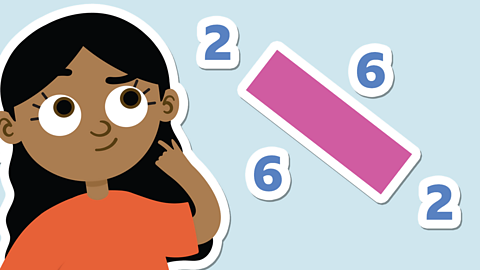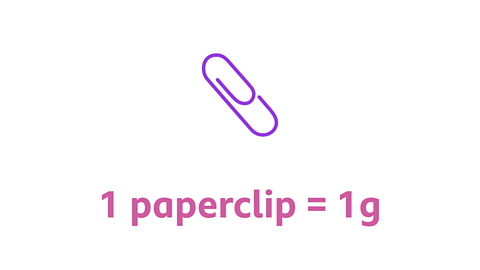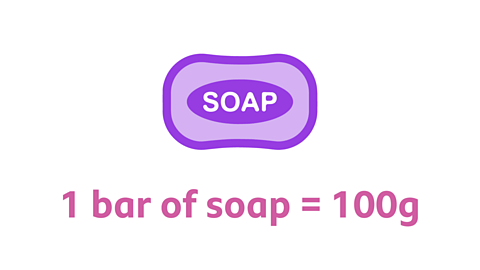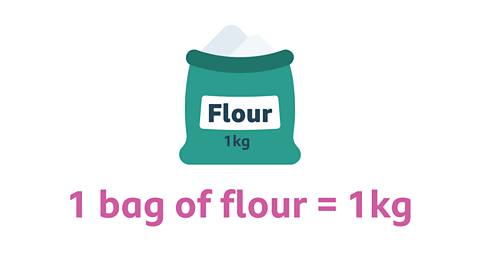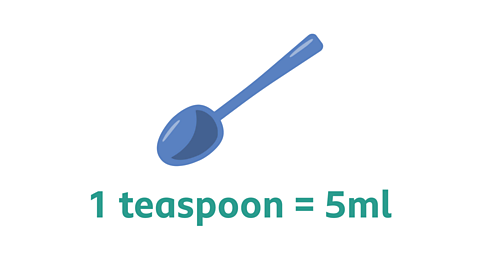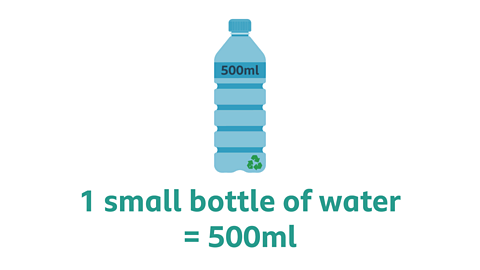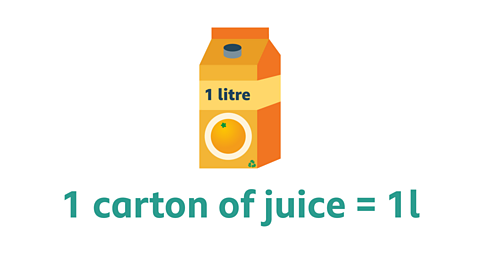How do you convert metric units?
Units from the metric system can be used to describe the mass, volume or length of an object.
Mass is measured in grams (g) and kilograms (kg).
Volume is measured in millilitres (ml) and litres (l).
Length is measured in millimetres (mm), centimetres (cm), metres (m) and kilometres (km).
To convert metric units, you need to remember these facts:
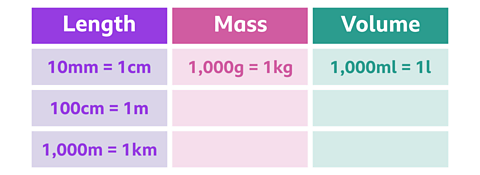
Quiz: Converting metric units
Test out your knowledge of converting metric units with this quiz, then read on to complete the page.
Converting grams and kilograms
Grams and kilograms are metric units which are used when measuring the mass of objects.
Grams are usually used for lightweight objects, while kilograms are used for heavier objects.
The word ‘kilo’ means 'one thousand'. One kilogram is a thousand grams.
1kg = 1,000g
Here are some objects that are weighed in grams and kilograms.
1 of 3
A double number line is a useful tool to use when you want to convert between grams and kilograms.

For example on the number line you can see that:
5kg = 5,000g
To convert from grams to kilograms, you divide by 1,000.
To convert from kilograms to grams, you do the opposite - you multiply by 1,000.

You may also find a bar model helpful when converting grams and kilograms.
This bar model shows how many kilograms or grams are equivalent to 5 kilograms.
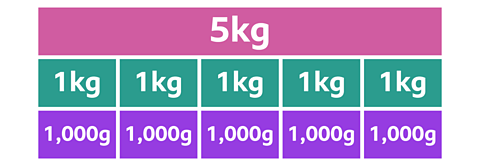
Converting millilitres and litres
Millilitres and litres are metric units which are used when measuring volume.
‘Milli’ means ‘one thousandth’. So, a thousand millilitres is 1 litre.
1,000ml = 1 litre
Take a look at these objects and the volume of liquid they might hold.
1 of 3
A double number line is useful when you want to convert millilitres and litres.

To convert from millilitres to litres, you divide by 1,000.
To convert from litres to millilitres, you do the opposite, you multiply by 1,000.

You may also find a bar model useful when converting millilitres and litres.
This bar model shows how many litres or millilitres are equivalent to 5 litres.
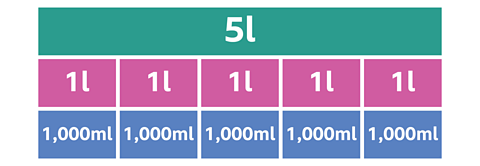
Converting millimetres, centimetres, metres and kilometres
When converting millimetres, centimetres, metres and kilometres you need to remember:
10mm = 1cm
100cm = 1m
1,000m = 1km
You will also need to use your knowledge of decimal places when converting measurements of length.
To convert millimetres and centimetres you divide by 100.
To convert centimetres to millimetres you multiply by 1000.
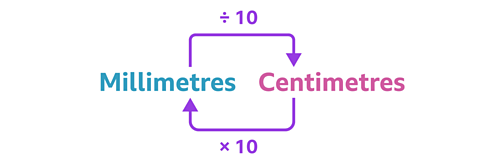
Take a look at the line being measured by this ruler.

If you wanted to measure this line, you could say it is 5\(\frac{1}{2}\)cm.
Using decimals, you could say it is 5.5cm.
You could also say it is:
5cm + 5mm
If you converted the centimetres into millimetres:
5cm × 10 = 50mm
Then add the extra 5mm.
50mm + 5mm = 55mm
Therefore, 5.5cm is the same as 55mm.
To convert from centimetres to metres, you divide by 100.
To convert from metres to centimetres, you multiply by 100.

To convert metres to kilometres you divide by 1000.
To convert kilometre to metres you multiply by 1000.
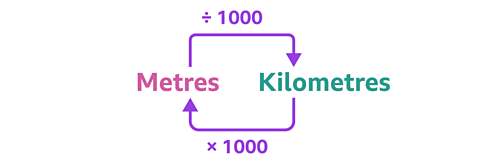
You may also find a bar model useful when converting metres, centimetres and millimetres.
This bar model shows how many millimetres, centimetres, metres are equivalent to 5 kilometres.

Example 1
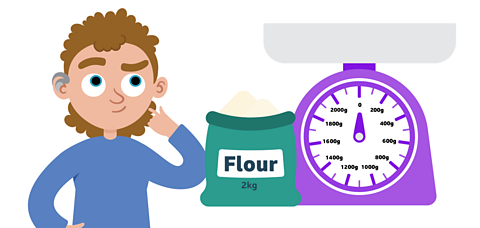
Patrick needs 1.7 kilograms of flour for a recipe but his scales show the mass in grams.
How many grams of flour does he need?
✓ Patrick needs 1700g of flour.
Remember, to convert kilograms into grams, you need to multiply by 1,000.
1.7kg × 1,000 = 1700g
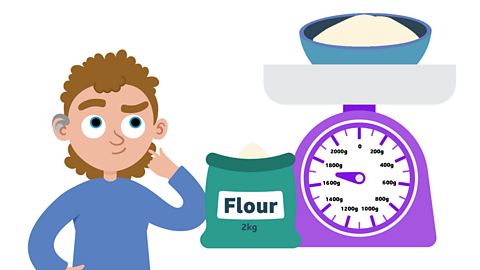
Example 2
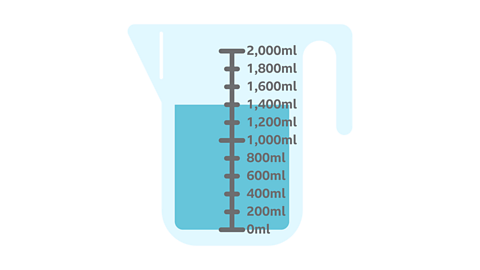
What is 1,400 millilitres in litres?
✓ The volume of liquid in the jug is 1.4 litres.
Remember, to convert millilitres into litres you have to divide by 1,000
1400ml ÷ 1,000 = 1.4l
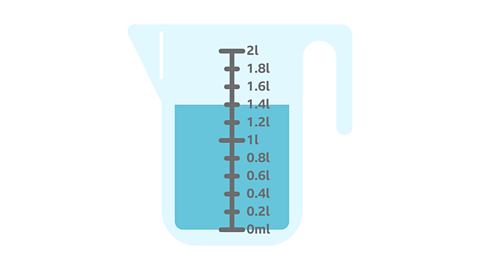
Example 3

Patrick and Maria had a long jump competition, but they are not sure who won.
Look at the table and convert one of the distances to help you work out the answer.
Who was the winner?
✓ Maria was the winner.
To work out the answer, you could convert Patrick’s distance into centimetres.
Patrick jumped 1.5 metres. To convert this into centimetres, you need to multiply by 100.
1.5m × 100 = 150cm
You could also convert the centimetre measurement to metres:
170cm ÷ 100 = 1.7m
Patrick jumped 1.5m.
Maria jumped 1.7m.


Play Guardians: Defenders of Mathematica to get ready for SATs. gamePlay Guardians: Defenders of Mathematica to get ready for SATs.
In this game, use the times tables and more maths skills to defeat monsters and reclaim the Kingdom.

More on Length and distance
Find out more by working through a topic
- count6 of 6
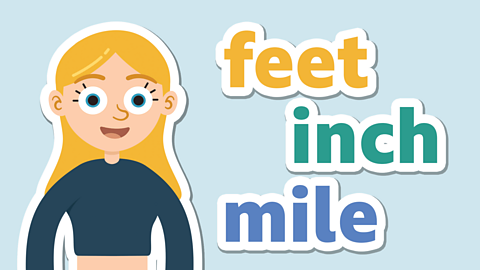
- count1 of 6
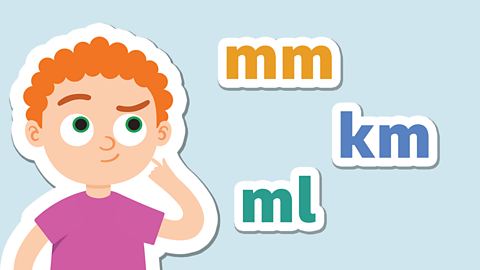
- count2 of 6

- count3 of 6
